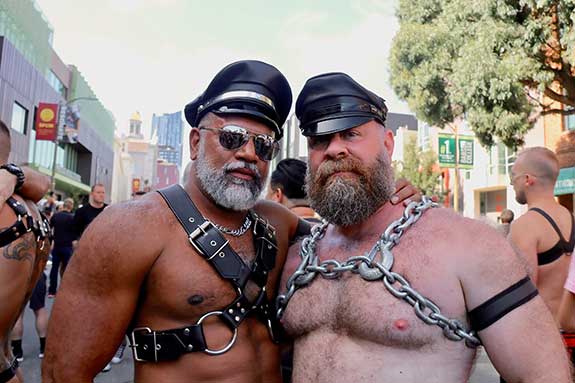There is No Rope for Fat Bottoms
By Ashley Ray
Discussions abound lately concerning topics such as – “Rope for Bigger Bottoms” or “Ties for Larger Bodies.” Rope, in its essence, is adaptable, it is versatile, and ingenuitive.
Adapting rope for EVERY BODY is a vital and admired skill in rope practitioners, however bigger bodies do not inherently require special ties.
Speaking from my experience and discussions with other people who do rope bondage and suspension, the changes for larger bodies typically consist of more rope and more thoughtfully engineered approaches to lift/descent in suspension.

The idea that a special or adapted harness is required simply because the body is larger is just quite frankly bullshit, and it speaks to a larger social commentary: Fat phobia. I understand deeply and fully, the desire, demand, and disappointment in not seeing larger bodies in rope. However separate but equal does not offer equity. If resources are not available within mainstream access, then this speaks to the whole at large (pun intended).
I suggest the conversation within the rope arts (shibari/kinbaku) would best be served by turning toward how to adapt to ANY body. No matter the size, PEOPLE of all sorts have mobility, flexibility, neurological, neuropathy, illness, sensitives, emotional difficulties, and so on. A rigger’s (the person tying with rope) ability to adapt to any needs in a tie/scene or kink play is a true skill. This is not to say that personal preference and risk profile are not at play. We all choose who we play with and in what capacity.

For anyone entering into rope bondage or kink play, I would suggest a deep introspection toward self-assessment. Often, our strengths and weaknesses are one in the same. It may be hard to view our difficulties in this way, but it may offer assistance in working toward goals in a realistic manner. For myself, I find that the struggles I grapple with provide me with a chance to attend to and even strengthen skills for coping and adapting. Rope bondage is no different. To fully commit to the act of ropes we must surrender into deep vulnerability in more senses than may be viewed upon the surface. A deeper level understanding of who we are can often offer us ways of authentically being ourselves.
This self-reflection may be helped in asking oneself a few questions with follow-up, after exploration. These inquiries may look like:
- If I were my rope partner, what would I enjoy about tying with me and what would be difficult about tying with me?
- What do I hope to gain from the experience of rope and what can I offer in a rope experience?
- What are critical and possibly life impacting points someone should know to do ropes with me and what do I want to know about others I am doing rope with?
I often retell the story of my first real rope bondage experience as an additional example of considering different needs in rope. As an eager rope lover, I wanted to experience rope to the fullest and requested to go right into a challenge. My rope top took time to discuss any medical concerns that may be present and/or require attendance. I mentioned asthma, and other than that I felt I was in the best shape of my life at the time and had nothing more to note. In the middle of the exaltation of rope I began to feel it — the heat, the difficulty breathing, the light headedness – a panic attack. This resulted in my faint departure from the scene and then, thankfully, revived into caring arms.
However a Fifty-Shades-fairy-tale this may sound, it nevertheless was a scary situation for us both, and one from which we gained masses of experience. The lesson I gathered was that there was much more to consider than just the physical aspect of rope, that the physical impacted the internal (and vice versa), and the greater my awareness of this the better I can manage increased dangers.
I also must disclaim: I do not practice tying. I cannot speak on this from a rigger’s perspective, only my own as a person in ropes, who has been in and done almost every tie/situation available in rope and have been to as much (if not more) rope education than those who tie me. My own experience, observations of others, education, and personal work is offered here. I did speak with many rope people concerning this and received nothing but agreement.

Contrary perspectives, unfortunately, have still been toward assumptions made about a larger bodied person’s health and abilities. An understanding that health and size are not indicators of each other would be most helpful in approaching how we interpret the human condition, as well as ways to manage the difficulties with which we struggle, overall, and in ropes.
As a community of kinksters who are typically working to be inclusive to individuals and groups marginalized — fatties are no different. Attending to each other as individual and connected humans may allow us all additional compassion.
I don’t need a special harness because of my size.
Neither do you.
Ashley Ray is a Vegas local transplant from the south. They are a licensed professional counselor and professor of psychology specializing in human development and human sexuality. They also spread rope bondage to the masses through monthly community classes, private lessons, consultations, and performance around the nation. She/they also work to inspire others to find their strength and beauty with body positive modeling. Connect with Ashley on FetLife or Instagram: @RayzOfAsh
This article was originally published in the premiere issue of PROUD & Kinky Magazine. You may read it in its original format here.






